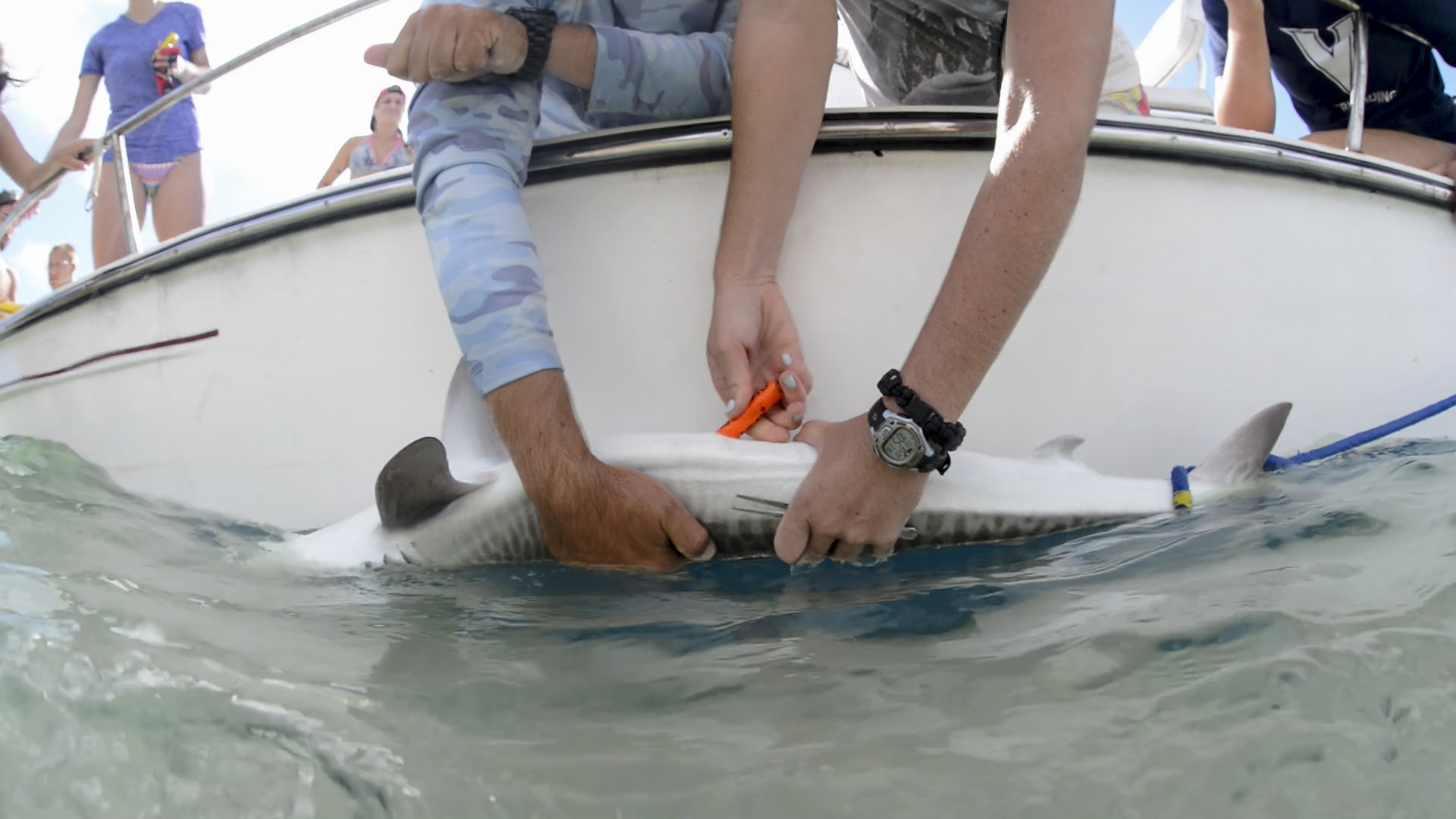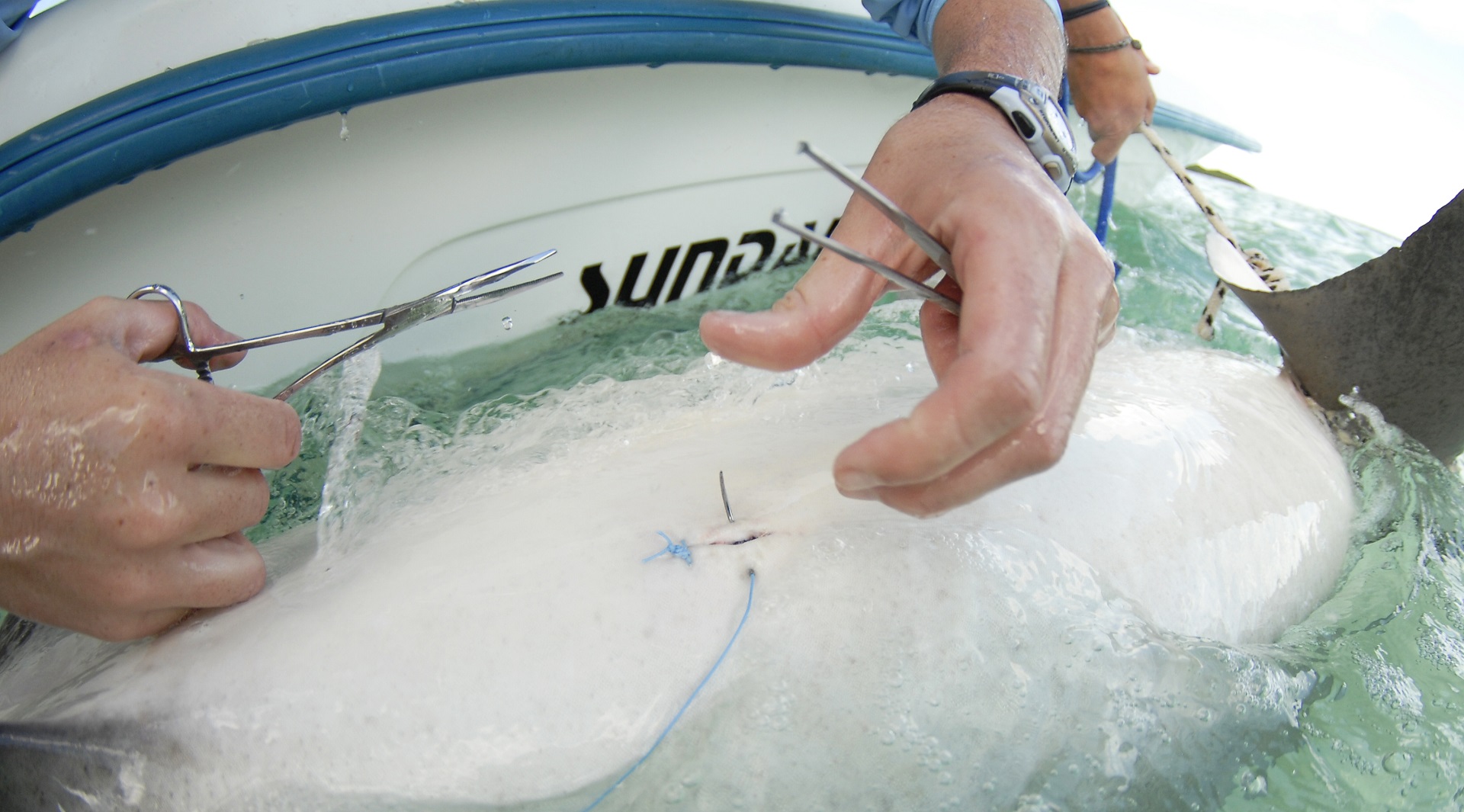Tagging
Waves crash above my elbows and I feel the weight of the shark pulling me down. We’re tethered to the long-line, facing 20-knot winds and five-foot seas in a 20-foot boat with an 11.3-foot tiger shark tied to the side. There is a man screaming less than six feet away and every time I stick my hands into the water I feel a small electric shock as our flooded boat’s battery reacts with the salt water we are kneeling in. There is no time to waste: the weather conditions are deteriorating and another boat is inches away from crashing into ours. I begin to cut.
I am the lab manager at the Bimini Biological Field Station and for the past year I have been overseeing our surgical tagging procedures. During this time we have taken on three new PhD candidates, all of whom need to attach acoustic transmitters to sharks for their projects. The benefit of surgically implanting tags is that they will be retained for the remainder of the shark’s life, whereas externally attached tags can be shed.
The tiger shark we have captured is the first mature female caught since the arrival of PhD candidate Matt Smukall, whose project aims to identify the nursery grounds for this transient species. The capture has coincided with the visit of a film crew that wants to film the work-up and tagging and, to get the best angle, they must position the boat directly parallel to ours. Because of the poor weather, however, we have people on standby to push the boat away and prevent it from crashing into ours as I dangle over the side holding onto the shark.
A lot of yelling is coming from the other boat, instructing us on what to do with the shark. This isn’t our first rodeo, though, and my colleagues and I are quick to take all the necessary measurements and fin clips and turn the shark to induce tonic immobility. There is screaming around me and I’m being constantly and mildly electrocuted, but I block it all out to focus on performing the shark surgery quickly and safely.
I make my first cut about 10 inches in front of the pelvic fins and cut upwards so I don’t dull my blade on the tough dermal denticles of the shark’s skin. I make swift, shallow slices through the muscle tissue, but when I feel the slight tug of the blade on the lining of the body cavity I adjust my blade to cut up, pinching the skin with tweezers and pulling away from the body so I don’t cut any organs. Once I feel I have breached the body cavity, I slip the 10-year acoustic pinging tag into it and place one suture to close the wound. The total surgery time is less than two minutes from first cut to tying the last knot of my single suture. By the time our boss yells for us to do the surgery, I’m done and we’re flipping her back over. She’s ready to be released – and we’re eager to untie her so that we can begin bailing out the boat.
To keep up to date with Bimini Sharklab’s exciting research projects please follow us on Facebook, Instagram and Twitter


